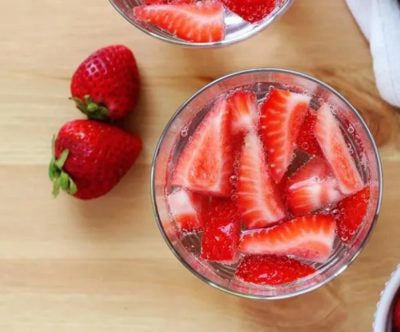Progressive bartenders, lime shortage drive use of the sour ingredient
Apr 17, 2014 David Flaherty
David Flaherty is the Beer & Spirits Director at Hearth Restaurant and the Terroir wine bars in New York. A freelance beverage writer, David is also a Cicerone Certified Beer Server, a wine geek, a seeker of fine spirits, a father and a fledgling home brewer. He blogs at Grapes and Grains.
Vinegar can be found in nearly every cupboard in every town in every country around the world. For over 10,000 years, humans have found inspiring uses for it – from healing elixirs, to pickling, to cleaning, to dissolving chewing gum, to preserving fruit. Vinegar was most likely created by accident by some sad sap who neglected a cask of wine out behind the local pub, only to find upon his return that it had turned sour (the French word for it is “vinaigre,” which, directly translated, means “sour wine”). And thus, like so many other happy accidents in the beverage world, vinegar was born.
At its root, it’s quite a simple process to make vinegar: The fermentation of natural sugars to alcohol is followed by a secondary fermentation to vinegar. In a world without refrigeration, like that of colonial America, spoilage was a constant enemy. Vinegar created a veritable Fountain of Youth for fruits. Shrubs – beverages made with fruit, sugar and vinegar – and vinegar-fruit syrups came into use.
And today, after nearly being lost to time by the advent of refrigeration and industrially processed foods, shrubs and drinking vinegars are roaring back into fashion for the making of cocktails. Driven by progressive bartenders on the hunt for new flavors to add to their liquid arsenals, as well as the current lime shortage that’s hit the United States, the trend – which arguably began nearly 10 years ago – is now reaching a feverish pitch. Vinegar-based cocktails and nonalcoholic drinks can now be found in mainstream bars and restaurants around the country.
Kelley Slagle, a New York-based mixologist who taught a seminar at Tales of the Cocktail in 2011 called “Vinegar: the Other Acid,” was quickly enamored with the history of vinegar-based drinks.
“Shrubs are a colonial American staple that started as a way to preserve fruit, but were also meant to be used for drinks,” she said, pointing out that Jerry Thomas, who created the first bartenders’ guide with cocktail recipes in 1862, even had a recipe on how to make vinegar shrubs. “Lemon juice is great in drinks, but it’s somewhat neutral in flavor. I love vinegar because you just get a lot more flavor. Instead of adding a one-dimensional character, you’re adding something that’s inherently complex.”
Joe Cleveland, bar manager at Chef Michael Chiarello’s Coqueta in San Francisco, has been working with vinegar in cocktails for nearly 10 years and currently has three drinks with vinegar on his cocktail list. He describes them as being “high in acid with bright flavors that are refreshing palate cleansers” and pair wonderfully with Coqueta’s Spanish-influenced food.
“We serve a lot of tapas, and the vinegar cuts through the oils of both the cheeses and the fatty, grilled meats,” he said.
He develops his drinks with the seasons and looks to both the markets and the chefs for inspiration, but also finds that vinegar shrubs allow him to “bring a bright summer flavor to a winter drink.”
With the current lime shortage hitting the bar and restaurant industry hard, operators are seeing the cost of limes skyrocket, forcing them to nix lime as a garnish and look for alternative sources of acidity in drinks. Paul McGee, a mixologist at Three Dots and a Dash in Chicago, has had to quickly shift his approach to developing his recipes.
“My cost per ounce of lime juice was previously 18 cents; now it’s 62 cents. That’s approaching the cost of some of the spirits you may be using,” he said. “The cost of shrubs varies between 20 to 40 cents per ounce. That’s another reason people are searching for different forms of acidity. You’re going to start seeing the trend of alternatives to lemon and lime juice.”
Are you using vinegar in beverages at your restaurants? Join the conversation in the comments below.
Cleveland of Coqueta is also feeling the cost pinch: “A case of limes went from around $20 when in season, or around $40 in the off season, to nearly $150 a case,” he said. With its acidic, sour tartness, vinegar is the perfect balancer for a cocktail, and has a much more accessible price, he added.
“It’s a much stronger acidity than citrus juice, and you can use much smaller amounts. Depending on the type you’re using, one-quarter ounce of vinegar may equal a full ounce of citrus,” Slagle said. Additionally, vinegar has an indefinite shelf life, so the fear of a high-priced case of limes rotting in your cooler is eliminated.
Vinegar is finding many fans in the bar community, but not all guests may be quite ready for what sounds like an incredibly strange, sour addition to their drinks. Three Dots’ McGee, who oversees both bar and restaurant cocktail programs, said he often approaches restaurant cocktail menus differently.
“I’ll sometimes omit the term ‘vinegar’ or ‘shrub’ as it might confuse people,” he said. “I don’t want to scare them away without them even trying it.”
The best thing about shrubs is they’re incredibly easy to make; you simply need anything that’s fermentable, some sugar and some vinegar. By tweaking the fruits and herbs, the types of sugar, or the different varieties of vinegar, bartenders have endless possibilities. But the base is always important.
“The one thing I would stress for someone new to vinegar is to choose really good vinegar,” Slagle said. “Buy the best you can afford and taste it on its own. … You don't have to buy the most expensive, but you do need to choose with care.”
Read more on his blog

